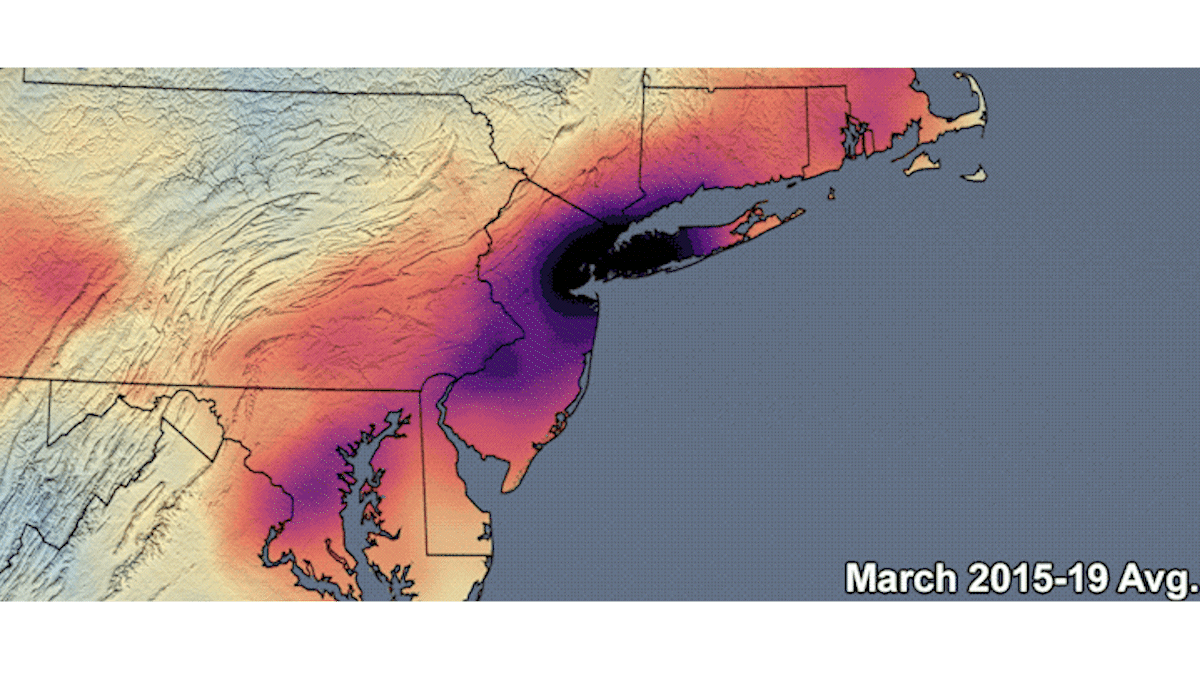Editors’ Vox is a blog from AGU’s Publications Department.
For decades, communities of color and those of lower educational attainment and income levels have experienced disproportionate exposure to environmental hazards and higher disease burdens. These inequities, driven by a variety of social, environmental, economic, and structural factors that themselves unevenly affect different population subgroups, continue to persist today. Research on environmental determinants of health is increasingly showing inequitable distributions of exposures and associated health risks among marginalized communities. Inequities in environmental exposures are well established for both chemical stressors, such as ambient air pollution, toxic metals, and poly- and perfluoroalkyl substances, as well as non-chemical stressors, including heat, natural spaces, noise, and light at night. The health consequences range from asthma, adverse reproductive outcomes, and cardiovascular effects to cancer and premature mortality.
Large geospatial datasets consistently reveal environmental injustices across a range of environmental stressors, geographical areas, and time periods.
Large geospatial datasets consistently reveal environmental injustices across a range of environmental stressors, geographical areas, and time periods. Although air pollution has drastically decreased across the United States since the passage of the Clean Air Act, the same areas that were most significantly burdened by fine particulate matter (PM2.5) pollution in the 1980s continue to remain disproportionately burdened in 2016. It’s not just PM2.5; even after an almost 50% reduction in passenger vehicle traffic during the COVID-19 lockdowns, nitrogen dioxide (NO2), an indicator of urban traffic-related air pollution that is associated with new asthma development among children, remained 1.5 times higher among least White census tracts across the U.S. when compared with most White tracts. Contributing to disproportionate exposure is the unequal distribution of air pollution sources. For example, Hispanics are disproportionately exposed to flares near oil and gas production sites, which may be associated with lower lung function among adults. Furthermore, marginalized neighborhoods are more frequently located near high-emitting sources of air pollution, such as major roadways, contributing to disparities in NO2 pollution in major U.S. cities.
Research also documents higher land surface temperatures, surface urban heat island effects, light pollution and less greenness among Black, Hispanic, and Asian populations, and communities with lower income and educational attainment. Higher air pollution levels and surface temperatures, as well as limited access to green space among marginalized communities are resultant of historical race-based housing practices, including “Redlining”. More research is needed to understand the drivers and downstream effects of these disparities, in addition to cumulative impacts from multiple stressors simultaneously.
Public and political attention is elevating Environmental Justice.
Public and political attention is elevating Environmental Justice (EJ), defined by the White House Environmental Justice Advisory Council as “the just treatment and meaningful involvement of all people regardless of race, color, national origin, or income, or ability, with respect to the development, implementation, enforcement, and evaluation of laws, regulations, programs, policies, practices, and activities, that affect human health and the environment.” Executive Order 14008, released on 27 January 2021, called for a Whole-of-Government approach to addressing environmental injustice. This includes the Justice40 Initiative, which aims to deliver 40% of the overall benefits of relevant federal investments to disadvantaged communities. In 2022, the government released a new Climate and Economic Justice Screening Tool with interactive maps highlighting disadvantaged communities at the census tract scale. The new tool complements an existing suite of EJ mapping tools at the national (e.g. EPA’s EJSCREEN, CDC’s Environmental Public Health Tracking Network) and state scales (e.g. MD EJSCREEN, CalEnviroScreen).
Novel geospatial technologies, data, and algorithms are further transforming our ability to monitor, track, and assess exposures to environmental hazards at locally relevant scales. Earth observing satellites, low-cost monitors, mobile sensors, models, citizen science monitoring, and distributed networks of connected devices, are increasingly providing high spatial resolution and more complete geographic coverage of environmental conditions. This unprecedented data availability is opening new avenues for mapping and analysis to better characterize disparities in the distributions of environmental stressors amongst population subgroups that have different ethnic, racial, and gender identities, socioeconomic, immigration, and incarceration statuses, and other identifiable characteristics. However, important challenges remain, including aggregating point data into large geographical units, linking data with different geospatial coverage, inferring individual-level data from group estimates, and incorporating health data.
The journal GeoHealth is opening a unique special collection entitled “Geospatial data applications for environmental justice.” We welcome submissions that detail current research on the inequitable burdens of environmental risk factors in urban and rural areas. Topics of interest include but are not limited to; heat, air pollution, light at night, inadequate access to natural spaces and recreational facilities, chemical pollution, water quality, and natural and man-made disaster risk. We also welcome policy pieces and commentaries that provide broader perspectives about applications of data and EJ mapping tools to identify and mitigate disproportionate environmental burdens, as well as research and funding needs to address gaps and weaknesses. Papers that are transdisciplinary, and those that include geoscience, health, sociological, and/or community science approaches are all highly relevant for this special collection.
We welcome submissions that detail current research on the inequitable burdens of environmental risk factors in urban and rural areas.
Queries to the organizers to share your topic proposal and/or abstract prior to submission are encouraged. To submit your manuscript to the collection, please follow the instructions on the Call for Papers to submit your paper through the electronic submission system.
—Susan Anenberg ([email protected]; ![]() 0000-0002-9668-603X), Editor, GeoHealth; Qian Xiao, University of Texas Health Sciences Center at Houston; Gaige Kerr, George Washington University; and Jayajit Chakraborty, The University of Texas at El Paso
0000-0002-9668-603X), Editor, GeoHealth; Qian Xiao, University of Texas Health Sciences Center at Houston; Gaige Kerr, George Washington University; and Jayajit Chakraborty, The University of Texas at El Paso

